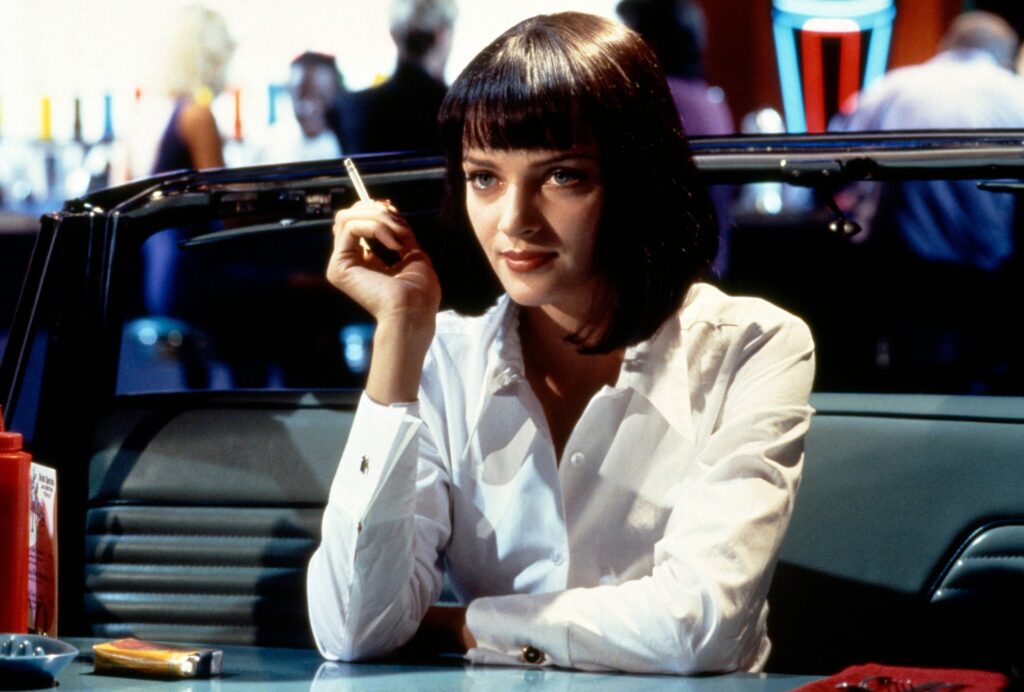“Pulp Fiction”, now celebrating its 30th anniversary, continues to resonate with audiences through its innovative storytelling and unforgettable moments. Quentin Tarantino’s second feature film redefined crime thrillers with its nonlinear narrative, blending violence, dark humor, and pop culture references. Of all the iconic scenes, none stands out quite like the Jack Rabbit Slim’s Twist Contest, where Mia Wallace (Uma Thurman) and Vincent Vega (John Travolta) dance to Chuck Berry’s “You Never Can Tell.” This moment encapsulates the film’s mix of nostalgia, tension, and style, becoming a cultural reference point that endures.
The appeal of this particular scene lies not just in the dance itself but in the way it captures the essence of *Pulp Fiction*. The film’s structure, which defies chronological order and traditional storytelling, immerses viewers in a world where mundane conversations juxtapose violent acts, and characters exist in a gray area of morality. The dance scene is one of these contrasts—light-hearted on the surface but simmering with underlying tension due to Mia’s dangerous connection to crime lord Marsellus Wallace and the stakes surrounding Vincent’s involvement with her.
The simplicity of their outfits—Mia’s crisp white button-up with cropped black pants and Vincent’s sleek black suit—adds to the timelessness of the scene. Their costumes, while now a go-to Halloween look for couples, symbolize more than just a fun night out. These outfits, which have been endlessly imitated, reflect the effortless cool and detached demeanor of the characters as they navigate their criminal world.
Beyond the costumes and choreography, the song choice, Chuck Berry’s “You Never Can Tell,” imbues the scene with a sense of playfulness. The upbeat track contrasts the tension between Mia and Vincent, adding to the offbeat, unpredictable energy that pervades the film. Tarantino’s use of music throughout *Pulp Fiction* is masterful, transforming seemingly ordinary moments into iconic set pieces. In the Jack Rabbit Slim’s scene, music, wardrobe, and movement coalesce into a microcosm of the film’s quirky brilliance.
The Jack Rabbit Slim’s dance scene is a moment of levity, but it is also loaded with significance. It underscores Tarantino’s genius in blending high and low culture, integrating homages to 1950s Americana into a film that also references noir cinema, exploitation films, and spaghetti westerns. The setting of the dance contest itself—an exaggerated, kitschy homage to 1950s diners—reflects *Pulp Fiction*’s wider thematic exploration of pastiche and cultural memory.
One of the most compelling aspects of *Pulp Fiction* is how it defies easy categorization. It’s a gangster film, but it’s also a black comedy, a neo-noir, and an anthology. The Jack Rabbit Slim’s scene, in all its absurdity and charm, encapsulates this blending of genres. The surreal quality of the scene, where two killers casually partake in a twist contest, exemplifies Tarantino’s ability to mix the mundane with the extreme, the comedic with the violent.
This juxtaposition is key to *Pulp Fiction*’s lasting influence on modern cinema. The film’s ability to weave multiple narratives while playing with tone and structure has inspired countless filmmakers and writers since its release. Tarantino’s dialogue—another standout feature—feels both real and stylized, full of sharp wit and cultural references that make the characters’ interactions feel organic. In the case of Mia and Vincent, their casual banter about vanilla milkshakes and Elvis provides a counterpoint to the high-stakes world they inhabit.
Cinematically, the Jack Rabbit Slim’s scene is a perfect example of Tarantino’s penchant for using long, uninterrupted takes to build tension and immerse viewers in the moment. The camera follows Mia and Vincent with minimal cuts, letting the scene breathe and giving the audience time to absorb the details. This technique allows the viewer to feel like a participant in the moment rather than just a passive observer, amplifying the impact of the scene.
The scene’s impact also extends beyond the screen, influencing fashion, dance, and music culture. Mia Wallace’s look—her sleek bob, crisp white shirt, and bold lipstick—became an instant fashion icon, embodying a blend of retro cool and modern edge. Her dance with Vincent, though simple in its choreography, exudes a laid-back confidence that has been endlessly referenced in pop culture, from music videos to fashion editorials. Tarantino’s ability to turn a simple moment into a cultural touchstone is part of what makes *Pulp Fiction* a cinematic milestone.
Additionally, the scene’s humor lies in its lack of pretense. Mia and Vincent, hitmen and criminals, engage in a moment of pure, carefree dancing. It’s a fleeting, humanizing scene that reminds viewers that even in the morally ambiguous world of *Pulp Fiction*, characters experience joy, albeit briefly. This levity is short-lived, as the narrative soon returns to its darker elements, but it’s this constant oscillation between light and dark that gives the film its dynamic energy.
Looking back at *Pulp Fiction* three decades after its release, the Jack Rabbit Slim’s Twist Contest scene remains a standout example of why Tarantino’s work resonates so deeply. It’s not just a dance scene; it’s a representation of the film’s larger themes—cultural nostalgia, tension, and unpredictability. As *Pulp Fiction* continues to be celebrated and analyzed, this scene will always serve as a testament to Tarantino’s unique vision and his ability to blend style, substance, and entertainment in ways that feel timeless.
The Jack Rabbit Slim’s Twist Contest from *Pulp Fiction* endures as a defining moment in both the film and Tarantino’s career. Its combination of humor, tension, and cultural resonance encapsulates everything that makes the film a masterpiece. The simplicity of the dance and costumes, paired with the complexity of the characters and setting, continues to make this scene a cultural touchstone, one that has left a lasting imprint on cinema and pop culture alike. As *Pulp Fiction* celebrates its 30th anniversary, it’s clear that moments like this will continue to capture the imagination of audiences for generations to come.
No comments yet.







